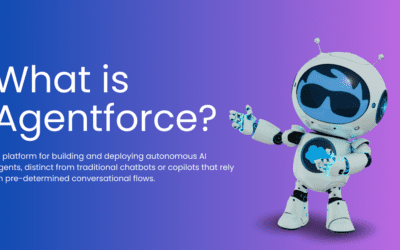Salesforce DevOps Center
Want to learn about Salesforce DevOps Center?
This blog aims to walk you through a simple process by which you will be able to comprehend all about DevOps, followed by a discussion about the Salesforce DevOps Center.
So let us begin with what exactly DevOps is –
As the name implies, DevOps is an amalgamation of two words,i.e. Developers and Operations. This software engineering methodology aims to integrate the work of software development and software operations teams. Throughout this collaboration, both teams are encouraged to cultivate a culture of collaboration and also a sense of responsibility. This, in turn, makes productivity and efficiency higher.
DevOps comprises four key principles that guide application development and deployment effectively and efficiently. Listed below are four principles that emphasize the most successful features of modern software development.
- An automatized lifecycle for software development.
- The exchange of information and better communication between developers and operations.
- A commitment to continuous improvement and minimizing waste.
- An emphasis on customer needs with quick feedback loops
Organizations can improve code quality and achieve faster time to market by leveraging these principles.
What is Salesforce DevOps Center?
With the new DevOps solution, Salesforce will deliver the Salesforce DevOps Center as the main application. With the DevOps Center, declarative developers and administrative staff will have a new and powerful user interface for release management that will not only promote collaboration between declarative and programmatic developers but will also simplify the DevOps process. Admins can manage change and release processes with the flexibility they need by using the DevOps Center, which serves as one point of verity for all projects and work to be done.
Let us go over how an admin will benefit from Salesforce DevOps Centre.
This new version helps teams collaborate, manage changes, and assure synchronized information. The whole process is mentioned below:
- Track work item:
In the DevOps Center, a work item is used as a unified experience, one that is similar to a “ticket”, in which the conditions for any change requested are defined. A work item is tracked as it moves through its lifecycle from planning to development, to review, to testing, to release.
- Establishing Secure Connection:
From a work item, you can easily launch a development environment (a Developer Sandbox). To establish a secure connection using OAuth, you just need to log into the sandbox in DevOps Center first. By clicking on open in the work item, the connected sandbox will be opened.
- Being Notified:
The admin is automatically notified of the changes they make as they modify the code, therefore identifying the changes is as easy as clicking a button in the DevOps Center.
- Automated file-choosing process:
The process of implementing changes has been automated. The admin no longer needs to filter through multiple lists of elements to find the ones they want to migrate. When all the modifications have been retrieved and displayed to you in the UI, you still have the option of choosing which files you want to migrate ahead.
- Choosing the changes
Imagine that the admin made a change that also affected a profile and they may not want to migrate the profile, or they may have experimented with different changes before deciding upon the final implementation, so you do not want to migrate all those changes. Therefore, they can leave those components unchecked when informing the transfer of their components.
- Metadata Source
Afterward, the admin commits and pushes the metadata source files into the connected GitHub repository, and the tool also creates a pull request when they commit changes.
- Reviewing the changes:
If the admin needs to make any revisions to the work item as they work on it, they can simply move it to the ready-for-review state when they are ready to move forward in the process. A Pull Request is automatically created behind the scenes on GitHub, allowing team members to review the changes. This can be done without knowing anything about GitHub. Team members can now use the source control system to collaborate, review, and synchronize.
In conclusion, the Salesforce DevOps Centre is an attempt to simplify a quite complex workflow by providing a platform for better communications.
Kizzy Consulting
Kizzy Consulting is a Salesforce Consulting Partner based in Panchkula, India. Kizzy has successfully implemented 100+ Salesforce projects for 100+ clients across sectors like Financial Services, Insurance, Retail, Sales, Manufacturing, Real estate, Logistics, and Healthcare in countries like the US, Europe, Germany, and Australia. Get a free consultation now by emailing us at [email protected] or Contact us.





